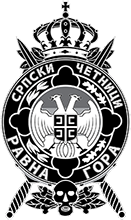
Badges & Cocarde
Throughout the collection of photos you will notice many individuals with badges and cocarde (in Serbian kokarda). Most often visible is the Ravnogorski Znak (Ravna Gora Badge). Below is a brief explanation of the badges worn.
Ravna Gora Badge
Ravnogorski Znak was made in Italy after WWII. Manufactured (late 1945) in full size and miniature. It became the symbol for the Soldiers Association of the Royal Yugoslav Army. It was also made in the Latin script for members of the Royal Yugoslav armed forces of non-Serbian origin. Highly symbolic triangle with the two headed eagle and the letters P and D M (in Cyrillic) which represent King Petar II and Gen. Draža Mihailović. At the base of the badge are the words “Ravna Gora“ the mountain where General Mihailović formed one of Europes first Allied resistance movements during WWII.
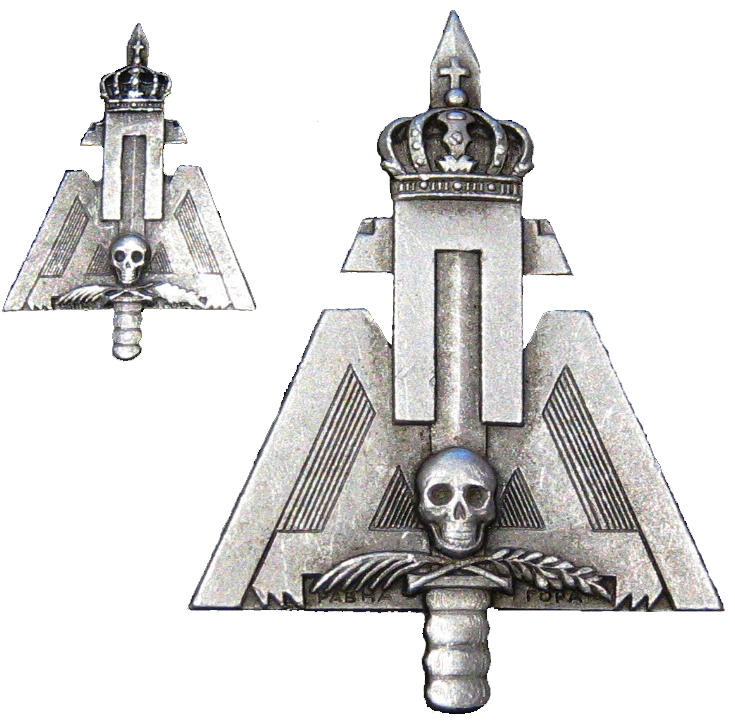
Dinarska Kokarda
The Dinarska Cocarde was most likely made during wartime. Worn by members of the Dinaric Chetnik Division whose commander was Vojvoda Momčilo Đujić. It used a bullet casing and aluminium for the skull and cross bones. Some suggest that this cocarde was a copy of the pre WWII wartime cocarde see below. The two headed eagle appears to be stamped with a die and the skull cast. Made of brass it has a red cloth backing.
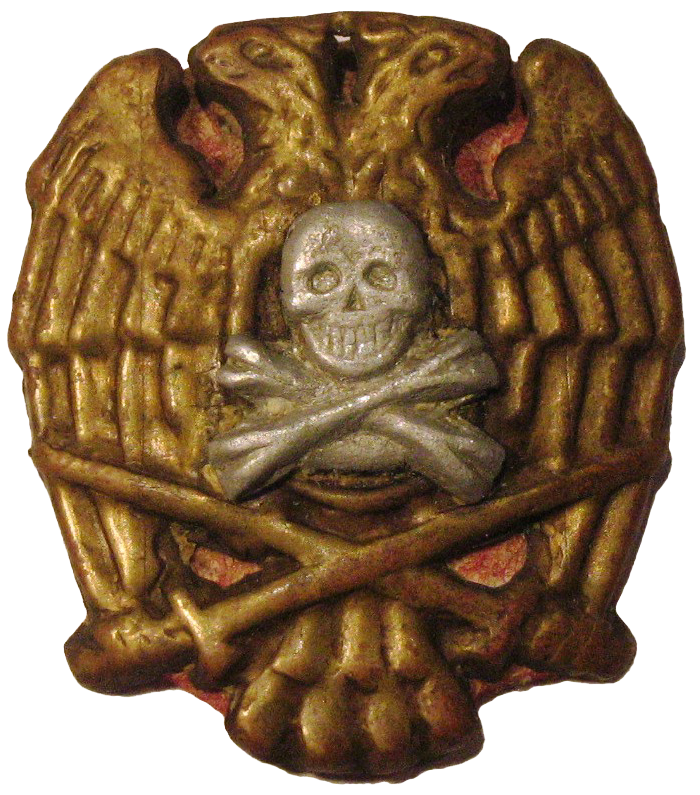
Ratna Kokarda
Wartime Cocarde probably made prior to WWII. Several versions exist however with minimal differences. On the reverse some versions had the name of the mint, in this case: “Ковница АД Београд” (translated: Mint AD Belgrade). The term AD is believed to be something similar to what we call today a corporation. This badge was struck in two pieces, probably brass with silver plated eagles. The skull, possibly bronze is on a black painted background.
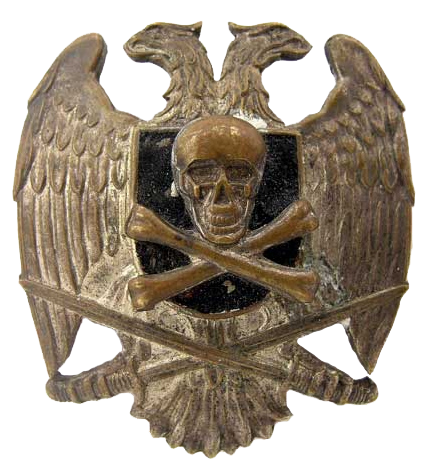
Officers Kokarda
Several versions exist of the Officers Cocarde. However, it always had the two headed eagle with a single crown; the monarchs initial П II (Petar II Karageorgevich) on top of the Coat of Arms of the Kingdom of Serbs, Croats and Slovenes (later Kingdom of Yugoslavia) represented by the four letters “C” (Serbs); the checkerboard (Croats) and the crescent and three stars of Celje (Slovenes), surrounded by oak and laurel leaves.

Non-Commissioned Officers (NCOs) Kokarda
Once again, several versions exist however all with a similar theme. Two examples with the Kingdom of Yugoslavia and Serbian crests (without oak and laurel leaves), worn by soldiers.
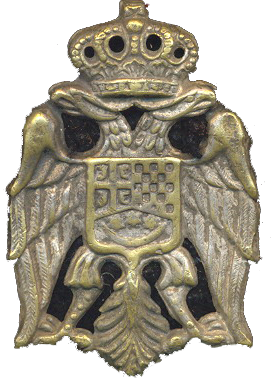
Non-Commissioned Officers (NCOs) Kokarda
As above
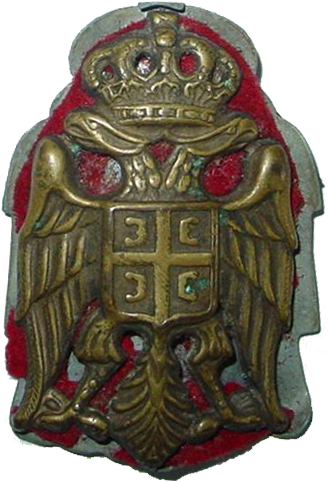
Officers Dinarska Kokarda
This cocarde was first worn by Djuro Djurdjevic in 1943 at Dalmatinsko Kosovo. The words around the laurel leaves are “With Faith in God for King and Country”
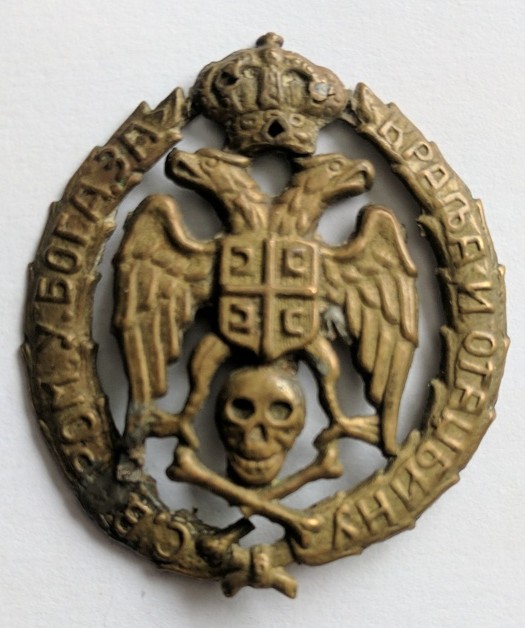
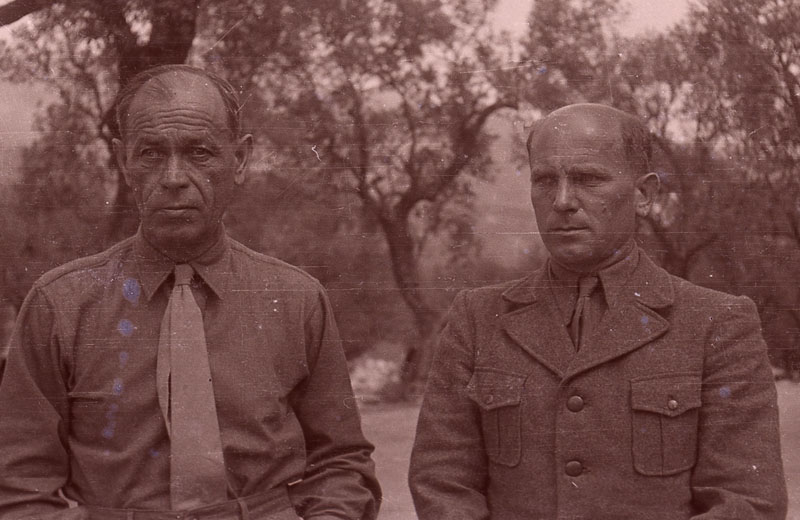
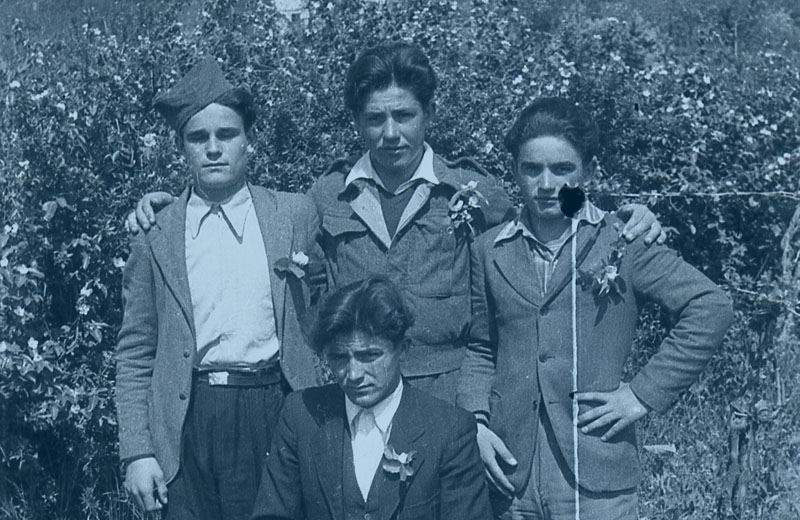
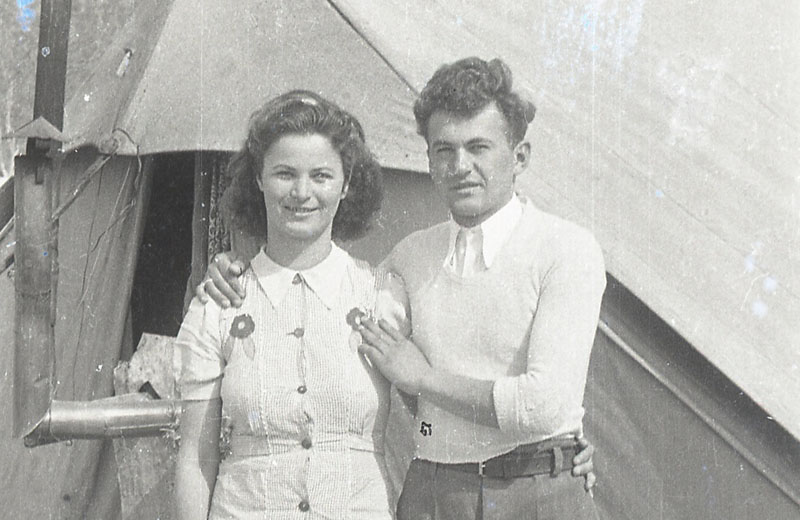
Photos
SERBIAN REFUGEES IN CAMP EBOLI
YEARS IN CAMP
1945 - 1947


